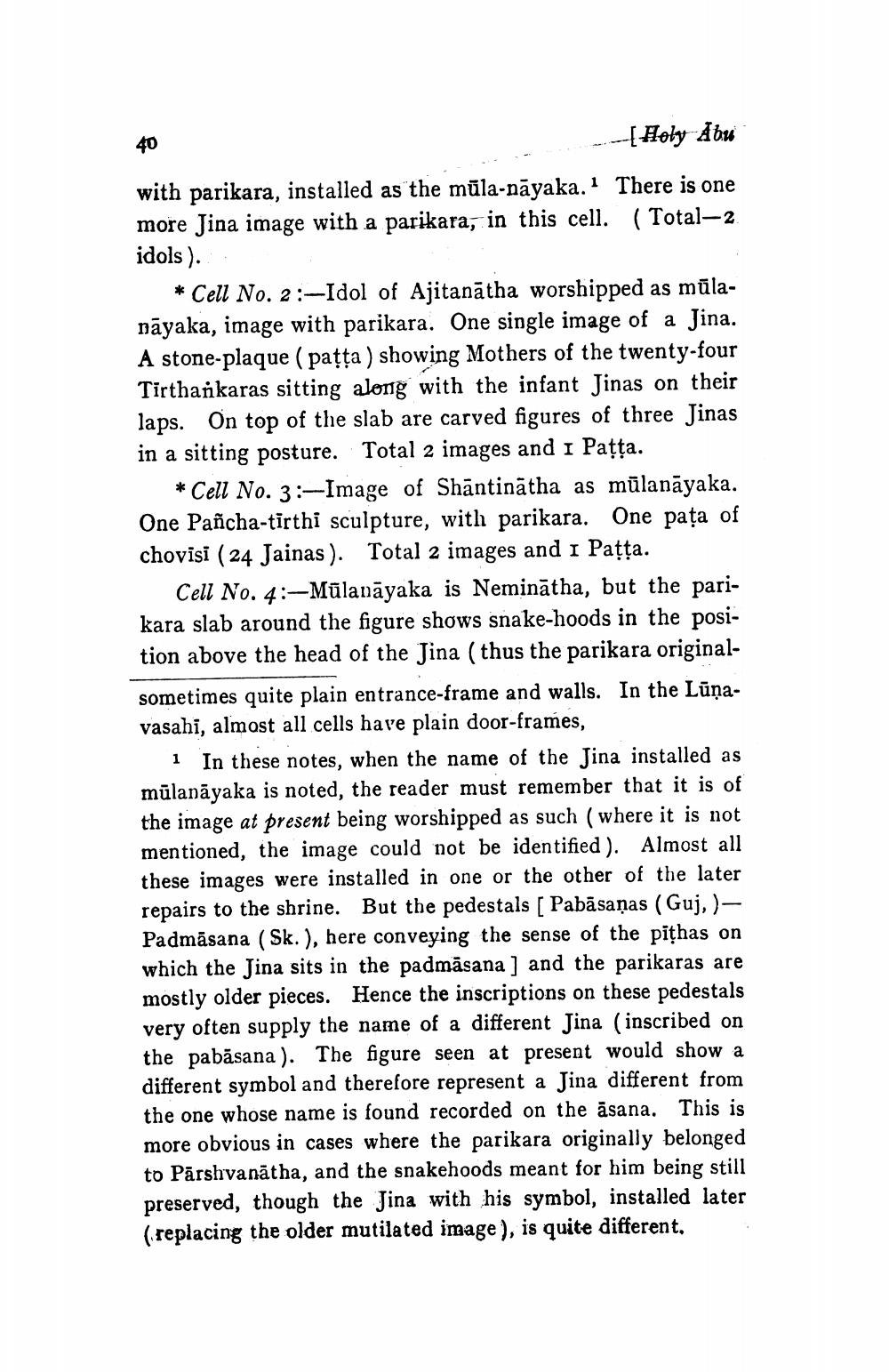________________
40
with parikara, installed as the mula-nayaka. more Jina image with a parikara, in this cell. idols).
[Holy Abu
There is one (Total-2
* Cell No. 2:-Idol of Ajitanatha worshipped as mulanayaka, image with parikara. One single image of a Jina. A stone-plaque (paṭṭa) showing Mothers of the twenty-four Tirthankaras sitting along with the infant Jinas on their laps. On top of the slab are carved figures of three Jinas in a sitting posture. Total 2 images and I Paṭṭa.
*Cell No. 3:-Image of Shantinatha as mūlanayaka. One Pañcha-tirthi sculpture, with parikara. One pața of chovisi (24 Jainas). Total 2 images and I Paṭṭa.
Cell No. 4:-Mulanayaka is Neminatha, but the parikara slab around the figure shows snake-hoods in the position above the head of the Jina (thus the parikara originalsometimes quite plain entrance-frame and walls. In the Lūņavasahi, almost all cells have plain door-frames,
1 In these notes, when the name of the Jina installed as mūlanayaka is noted, the reader must remember that it is of the image at present being worshipped as such (where it is not mentioned, the image could not be identified). Almost all these images were installed in one or the other of the later repairs to the shrine. But the pedestals [ Pabāsaņas (Guj, )— Padmasana (Sk.), here conveying the sense of the pithas on which the Jina sits in the padmasana] and the parikaras are mostly older pieces. Hence the inscriptions on these pedestals very often supply the name of a different Jina (inscribed on the pabāsana). The figure seen at present would show a different symbol and therefore represent a Jina different from the one whose name is found recorded on the asana. This is more obvious in cases where the parikara originally belonged to Parshvanatha, and the snakehoods meant for him being still preserved, though the Jina with his symbol, installed later (replacing the older mutilated image), is quite different.




